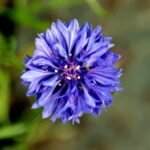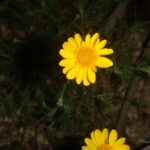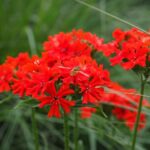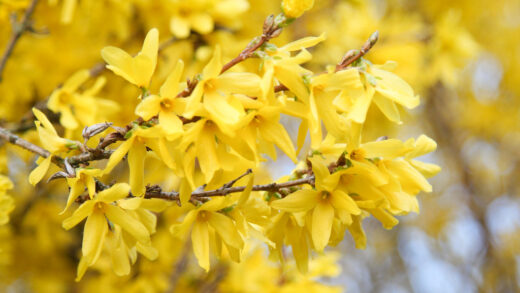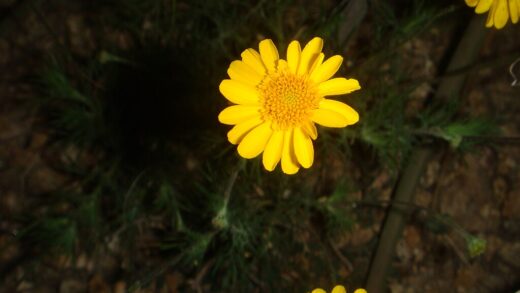The planting and propagation of the dwarf russian almond

Successfully establishing the Dwarf Russian Almond in a garden begins with proper planting techniques, which lay the foundation for a healthy and vigorous shrub. This process is more than simply digging a hole and inserting the plant; it involves careful consideration of timing, soil preparation, and the physical act of setting the plant in its new home. A well-executed planting minimizes transplant shock and encourages the rapid development of a strong root system, which is crucial for the plant’s long-term survival and performance. Following a systematic approach ensures that this beautiful, early-blooming shrub has the best possible start, enabling it to grace the landscape with its stunning floral display for many years to come.
The optimal time for planting the Dwarf Russian Almond is during the dormant season, either in the autumn after the leaves have dropped or in early spring before new growth begins. Autumn planting is often preferred in milder climates, as it allows the root system to establish itself throughout the winter, giving the plant a head start for the following spring. In colder regions, early spring planting is a safer choice, as it avoids exposing a newly planted shrub to the harshest winter conditions before it has had a chance to acclimate. Regardless of the season, planting on a cool, overcast day can help to reduce water loss and minimize stress on the plant.
Preparing the planting hole correctly is a critical step. The hole should be dug to be at least twice as wide as the plant’s root ball but no deeper than the root ball itself. This wider area of loosened soil allows the roots to spread out easily into the surrounding earth. It is a common mistake to dig the hole too deep, which can cause the plant to settle over time, effectively burying the crown (where the stem meets the roots) too deeply and potentially leading to rot. The bottom of the hole should be firm to provide a stable base for the root ball.
When handling the plant, it is important to be gentle with the root system. If the shrub is container-grown, carefully remove it from its pot and inspect the roots. If they are circling the container, a condition known as being root-bound, gently tease them apart or make a few vertical cuts down the side of the root ball with a sharp knife. This encourages the roots to grow outwards into the new soil rather than continuing to circle. For bare-root plants, any damaged or broken roots should be cleanly trimmed before placing the plant in the hole.
Propagation from cuttings
One of the most effective and popular methods for propagating the Dwarf Russian Almond is through cuttings. This vegetative technique creates a new plant that is genetically identical to the parent, ensuring that desirable characteristics like flower color and growth habit are preserved. The best time to take cuttings is in late spring or early summer, after the initial flush of growth has begun to mature slightly. This type of cutting, known as a softwood or semi-hardwood cutting, tends to root more readily than cuttings taken later in the season.
More articles on this topic
To take a cutting, select a healthy, vigorous stem from the current season’s growth. The ideal cutting should be about 4 to 6 inches long and should be taken from the tip of a branch. Using a sharp, sterilized knife or pruning shears, make a clean cut just below a leaf node, which is the point on the stem where a leaf emerges. The lower leaves should then be carefully removed from the bottom half of the cutting to prevent them from rotting and to expose the nodes where roots will form.
For the best chance of success, the base of the cutting should be dipped into a rooting hormone powder or gel. This product contains auxins that stimulate and accelerate root development. After applying the hormone, the cutting should be inserted into a pot or tray filled with a sterile, well-draining rooting medium, such as a mix of perlite and peat moss or coarse sand. The medium should be pre-moistened, and the cutting inserted just deep enough so that it stands upright.
Creating a humid environment is crucial for the survival of the cuttings, as they have no roots to absorb water initially. This can be achieved by covering the pot with a clear plastic bag or placing it in a propagator with a lid. The setup should be placed in a warm location with bright, indirect light, as direct sun can scorch the cuttings. It is important to check the cuttings regularly, ensuring the medium remains moist but not waterlogged, and to provide some ventilation to prevent fungal growth. Roots typically begin to form within several weeks.
Propagation by division
Propagation by division is another straightforward method for creating new Dwarf Russian Almond plants, particularly for mature, established shrubs. This technique takes advantage of the plant’s natural tendency to spread via suckers, which are new shoots that arise from the root system. Division is best performed during the dormant season, in either late autumn or early spring, when the plant is not in active growth. This timing minimizes stress on both the parent plant and the newly created divisions.
More articles on this topic
The process begins by carefully excavating the soil around the base of the parent shrub to expose the root system and the points where suckers are attached. It is important to dig far enough out to get a good section of root with each sucker. Using a sharp spade or a pruning saw, a section of the plant, complete with its own stems and root system, can be cleanly separated from the main clump. The ideal division will have several healthy shoots and a substantial portion of the roots.
Once a division has been separated, it should be treated as a new, bare-root shrub. Any damaged roots or stems should be trimmed off to create clean cuts. It is crucial to prevent the exposed roots from drying out, so the division should be replanted in its new location as quickly as possible. If there is a delay, the roots can be wrapped in damp burlap or temporarily heeled into a pile of moist soil or compost.
The new division should be planted at the same depth it was previously growing, following the same planting guidelines as for a container-grown or bare-root specimen. After planting, the soil should be firmed up around the roots to eliminate air pockets, and the new plant should be watered thoroughly. Providing consistent moisture during its first growing season is critical for the division to establish a strong, independent root system and begin producing new growth.
Seed propagation
While propagation from cuttings or division is more common and guarantees a clone of the parent, growing Dwarf Russian Almond from seed can be a rewarding, albeit longer, process. The seeds are contained within the small, fuzzy fruits that develop after the flowers fade. To collect seeds, the fruits should be harvested in late summer when they are mature and have started to dry on the plant. The outer fleshy covering should be removed to reveal the hard pit or stone inside, which contains the seed.
Dwarf Russian Almond seeds have a dormancy mechanism that needs to be broken before they can germinate, a process known as stratification. This involves subjecting the seeds to a period of cold, moist conditions, which mimics the natural winter environment they would experience. To do this, the clean seeds can be mixed with a damp medium like sand or peat moss, placed in a sealed plastic bag, and stored in a refrigerator for approximately three to four months. This cold treatment is essential to trigger the germination process.
After the stratification period, the seeds can be sown. They should be planted in pots or seed trays filled with a well-draining seed-starting mix. The seeds should be planted about an inch deep and the medium should be kept consistently moist but not wet. The pots should be placed in a warm location to encourage germination, which can be somewhat erratic and may take several weeks to a few months. Patience is key during this stage of the process.
Once the seedlings have emerged and developed their first true leaves, they can be carefully transplanted into individual pots to continue growing. They should be grown in a protected environment, such as a cold frame or greenhouse, for their first year to allow them to develop a strong root system before being planted out into their final garden positions. It is important to note that plants grown from seed may exhibit some variation from the parent plant and typically take several years to reach a size where they will begin to flower.
Aftercare for new plants
Proper aftercare following planting or propagation is just as important as the initial process itself for ensuring the long-term success of the Dwarf Russian Almond. The most critical aspect of aftercare for any new plant is watering. For the first few weeks and throughout the first growing season, the soil should be kept consistently moist to encourage the establishment of a robust root system. Deep, thorough watering is far more effective than frequent, light sprinkling, as it promotes deeper root growth, making the plant more resilient in the long run.
Applying a layer of organic mulch around the base of the newly planted shrub is highly beneficial. A 2 to 3-inch layer of wood chips, compost, or shredded bark helps to conserve soil moisture, which reduces the need for frequent watering. Mulch also helps to suppress weed growth, preventing competition for water and nutrients. Furthermore, it insulates the soil, protecting the new, developing roots from extreme temperature fluctuations. Care should be taken to keep the mulch from directly touching the stem of the plant to prevent potential rot.
For the first year, it is generally best to avoid heavy pruning. The plant needs to direct its energy towards developing a strong root system, and removing too much top growth can inhibit this process. The only pruning that should be done is the removal of any branches that were broken or damaged during the planting process. A more structural pruning can be undertaken after the plant is well-established, typically after its second or third year in the ground.
Monitoring the new plant for signs of stress, such as wilting, yellowing leaves, or pest infestations, is also a key part of aftercare. Transplant shock is common, and some initial wilting may occur, but if the plant is well-watered, it should recover. Catching any potential pest or disease issues early makes them much easier to manage. Providing this attentive care during the crucial establishment period will set the Dwarf Russian Almond up for a long and healthy life in the garden.
📷 Le.Loup.Gris, CC BY-SA 3.0, via Wikimedia Commons








